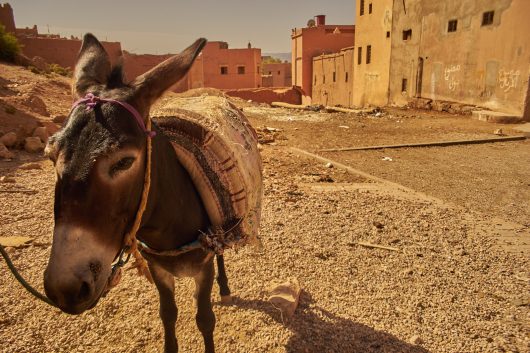Assessing Credit Access in Morocco
 Morocco is a North African country bordering the Atlantic Ocean to the west and the Mediterranean Sea to the north. Its economy relies largely on vibrant services and agricultural sectors for growth, and after experiencing a severe drought in 2016, the latter sector has bounced back in 2017. The industrial sector, however, has yet to see significant investment or growth.
Morocco is a North African country bordering the Atlantic Ocean to the west and the Mediterranean Sea to the north. Its economy relies largely on vibrant services and agricultural sectors for growth, and after experiencing a severe drought in 2016, the latter sector has bounced back in 2017. The industrial sector, however, has yet to see significant investment or growth.
According to the Moroccan government’s own estimates, extreme poverty has been eradicated in recent years. The percentage of the population living below the national poverty line was around 4.8 percent in 2014.
One signal of a healthy economy is access to credit. Below are some of the current strategies for improving credit access in Morocco.
Agricultural Credit Access in Morocco: The “Meso-Credit”
As is the case in many countries, rural areas in Morocco have a tougher time gaining access to credit — oftentimes, their residents don’t even bother trying. Innovations for Poverty Action reports that 50 percent of the rural households surveyed indicated that they needed credit in the previous year but never actually requested it.
To meet the needs of the 40 percent of Moroccan farms that are midsized, the Group Crédit Agricole du Maroc offers an innovative “meso-credit” portfolio. Midsized farms are considered too small to take a traditional banking approach but too large for a microfinance approach. Meso-credits are generally loans given to agricultural small and medium enterprises (SMEs) consisting of less than €9,300, with good success and repayment rates.
When the midsized farms can access credit, they can survive, thrive, expand and hire, which ultimately will reduce rural poverty in the area.
The World Bank’s Contribution
In May 2017, the World Bank announced a $350 million program to fund financial intermediation reforms in Morocco.
The program has four main goals:
- Support new sources of financing for SMEs
- Tighten oversight of the banking sector,
- Encourage capital market development by increasing the range of investment tools and protecting Moroccan investors
- Invest in the civil service pension fund to keep it solvent
Low-income households are expected to benefit from these reforms, as are female entrepreneurs. The reforms allow women to gain access to more sources of financing and electronic payment systems, which remove social and economic barriers that previously stood in the way of women.
The Takeaway
Many projects are underway to help improve Moroccan investors’ access to credit in a responsible and growth-oriented way.
Hopefully, these efforts—and others like them—will improve credit access in Morocco, get development projects off the ground and lift even more Moroccans out of poverty.
– Chuck Hasenauer
Photo: Flickr
